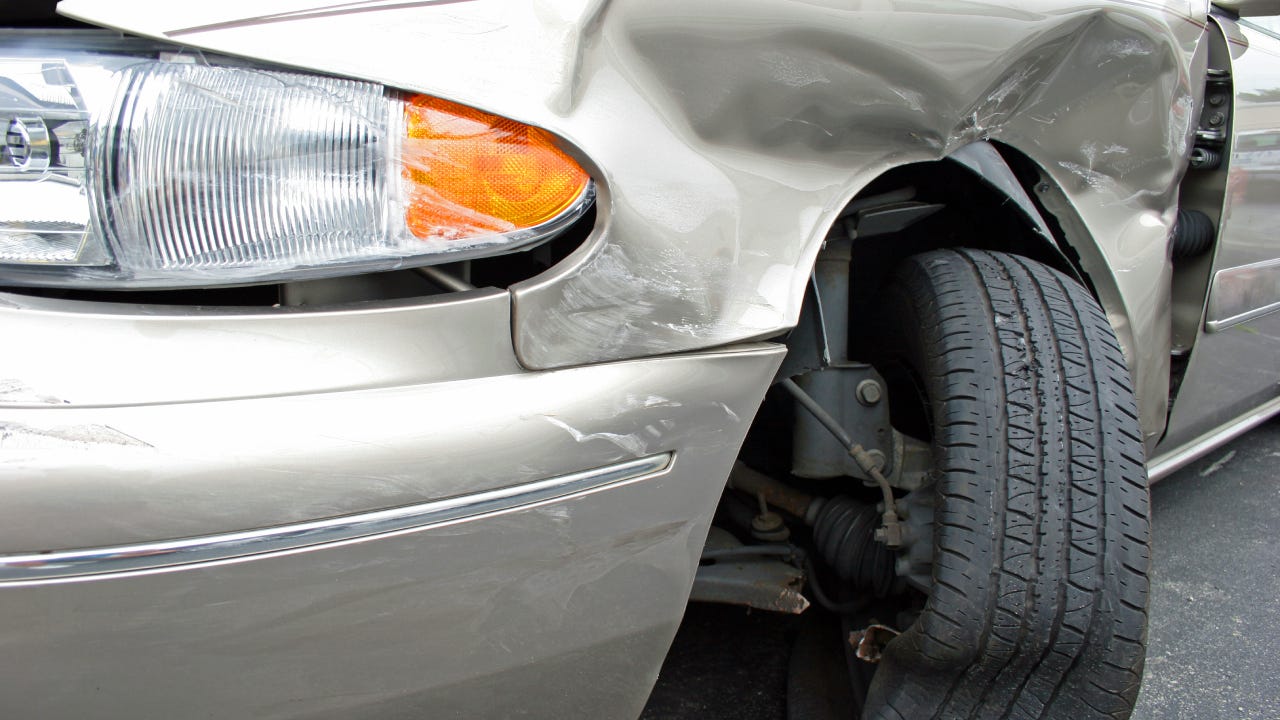What to do after a hit-and-run in Ohio

Car accidents can be costly, but hit-and-run crashes introduce more significant complications. Filing an insurance claim after a hit-and-run can be difficult, depending on your coverage — and if you’re found guilty of leaving the scene of a crash, the hit to your driving record could cause your insurance premiums to shoot up.
Hit-and-runs in Ohio
An accident becomes a hit-and-run when a driver flees the scene without providing personal information to the other involved parties. Even hitting a mailbox and failing to leave a note is considered a hit-and-run, but more serious hit-and-run accidents involve other drivers. Hit-and-runs are usually committed by the at-fault driver, but not always.
Even if there’s no apparent damage, you should still leave a note to avoid a potential hit-and-run conviction. More deliberate hit-and-run scenarios involve a driver fleeing the scene because they are uninsured and are trying to avoid liability in the accident. Just over 17 percent of Ohio drivers are uninsured, according to 2022 data provided by the Insurance Information Institute, which could increase the likelihood of hit-and-runs across the state.
Hit-and-run laws in Ohio
Ohio law requires every driver involved in an accident on a public road or highway, or any accident that involves property damage or injuries, to take these three steps:
- Stop at or nearby the accident scene
- Exchange the names and addresses, registration numbers and driver’s license information with other people involved in the accident
- Contact medical personnel if it is necessary
While the Ohio hit-and-run laws don’t specify that drivers need to exchange insurance information, providing this information to other parties after an accident is always a good idea. Furthermore, if police on the scene can’t verify your insurance information, you could be found in violation of Ohio’s insurance laws.
Typically, a hit-and-run will be treated as a first-degree misdemeanor per Ohio statutes, which can result in a fine of up to $1,000 and jail time of up to six months. Hit-and-run penalties in Ohio escalate as the seriousness increases, with the potential for felony charges if serious personal injury or death occurs. In this case, prison sentences can range from six to 12 months with a fine of up to $2,500. If there was a death, the fleeing driver may spend up to eight years in jail with a $15,000 fine.
In all cases, a hit-and-run could result in the driver’s license being suspended for at least six months. Driving with a suspended license could carry serious penalties in addition to the fines and jail time associated with hit-and-run charges in Ohio.
How does a hit-and-run affect car insurance in Ohio?
Whether you’re the victim or perpetrator, a hit-and-run accident can have serious insurance implications in Ohio.
If a hit-and-run driver strikes you, it may be harder to cover your losses since you can’t file a claim with the at-fault driver’s insurance company. Instead, you’ll need uninsured motorist (UM) coverage, medical payments (MedPay) or collision coverage — or all three — on your policy.
- Use uninsured motorist coverage for medical bills: Uninsured motorist coverage can help to cover medical expenses caused by an unidentified driver. However, keep in mind that Ohio law requires independent evidence of the hit-and-run to file an uninsured motorist claim. A police report from the scene can help.
- Use MedPay for medical expenses: Another way to cover medical costs following a hit-and-run is through medical payments coverage, an optional first-party coverage available for all Ohio insurance policies.
- Use collision coverage for repair bills: If your car is damaged in a hit-and-run, you’ll need collision insurance on your policy to file a claim with your insurance company.
If you don’t have any of these types of coverage on your policy, you may be stuck paying all your bills out of pocket. Neither uninsured motorist coverage, medical payments coverage, nor collision insurance are required by law in Ohio, so if you have a liability-only minimum coverage policy, a hit-and-run could be costly.
If you’re charged with leaving the scene of an accident in Ohio, on the other hand, you could face steep insurance rate increases along with serious criminal charges. As a reference point, let’s take a look at the average increase following an at-fault accident in Ohio. On average, Ohio drivers with clean records pay an average of $1,596 per year for full coverage insurance. After a single at-fault accident, that rate goes up to an average of $2,326 — a 46 percent increase. However, the increase following a hit-and-run charge can be even more significant than a standard at-fault accident, especially if serious injuries occurred as a result of the crash.
Additionally, at-fault drivers may also need to obtain an SR-22 after a hit-and-run in Ohio, amongst other serious traffic violations. An SR-22 is a financial responsibility certificate that proves a high-risk driver has met the Ohio minimum legal requirements for automobile liability insurance. Typically, an SR-22 will need to be maintained for three to five years — and your insurance rates are likely to stay as long as the certificate is required.
What to do after a hit-and-run in Ohio
Understandably, you will likely be shaken and emotional if you are the victim of a hit-and-run accident. However, most law enforcement agencies advise against following the at-fault vehicle as it flees the scene. Instead, it’s best to stay at the scene and take the following steps:
- Contact emergency services: The safety of everyone involved in the crash — including yourself and your passengers — should be your very first priority. Call emergency services (911) for an ambulance if there are injuries. You’ll also need to call the police. You may want a formal accident report for insurance, and law enforcement’s resources may help to find the driver who fled the scene.
- Collect information and take photographs: Collect as much information as possible about the accident. Take detailed notes about the car and driver, and record a license plate number if you can. Also, be prepared to describe the event in detail and take photos of the entire accident scene, the surrounding area and your vehicle.
- Locate witnesses: If you can, try to learn if anyone in the area, surrounding homes, or other buildings may have witnessed the accident. If they are willing to provide their contact information, get it and give it to the police. The witnesses may be able to give details about the other vehicle that could help find the at-fault driver and provide evidence for an uninsured motorist insurance claim.
- Call your insurance company: As soon as possible, contact your auto insurer and follow their guidance on how to file a claim. Provide your insurer with all the information you have gathered.
Frequently asked questions
You may also like






